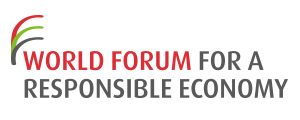As a global key player in yeasts and fermentation, Lesaffre desings, manufactures and markets innovative solutions for Baking, Food taste & pleasure, Health Care and Biotechnology. Family group in northern France in 1853, now a multi-national and a multicultural company, Lesaffre employs 8 300 people. The Lesaffre SI intends to reduce at the maximum the amount of effluent discharged from yeast production.
The LESAFFRE SI transforms its yeast effluents in Agricultural supplies
4. Environment
Waste management



Context
Objectives
- To independently ensure an effective treatment of a fraction of recovered raw materials, and to restore clean water in the Marque canal.
- To produce derived liquid and solid products responding to precise specifications for the greatest satisfaction of the users both in fertilization and in animal nutrition
APPROACH
The flows are homogenized then pre-concentrated. The first treatment stabilizes them and limits the development of odor through secondary fermentations.
The concentration allows the obtaining of a liquid organic fertilizer, beet juice and des-sweetened cane, used in several ways:
- As such as a liquid fertilizer intended for agriculture,
- After a nitrogen enrichment, concentrated juice becomes a raw material for animal nutrition.
- The concentration of juice provides in parallel crystals extracted by crentrifugation, which are mainly potassium sulphate, used as raw materials for the fertilizer industry.
The water evaporated during concentration is then re-condensed and still contains volatile organic compounds. They are processed in a wastewater treatment plant which generates biogas and organic products, the Fertel, which is dried using the biogas is recovered as compost.
Best Practice spotted in 2010 by the World Forum for a Sustainable Economy and updatedin 2015.
CONTRIBUTION TO COMPANY PERFORMANCE
- The sale of by-products generates revenue of 4,000 kilo Euros, which reduces the production cost of by-products.
- Market opportunities for waste effluents
- Ability of R & D department to develop marketable residual products
Benefits
- 99% of effluents enter into the composition of by-products.
- Limiting the extraction of potassium suphate fossils substituted by
- Ulphate potash produced in yeast
- Reducing the use of plants by recycled cake beetroot juice enriched in nitrogen
- Energy savings related to the production of biogas
- Workforce
- 8,300 (2015)
- Turnover
- 1.6 milliards euros (2015)
- Country
- France
Contact
Laetitia BISIG - This email address is being protected from spambots. You need JavaScript enabled to view it.


